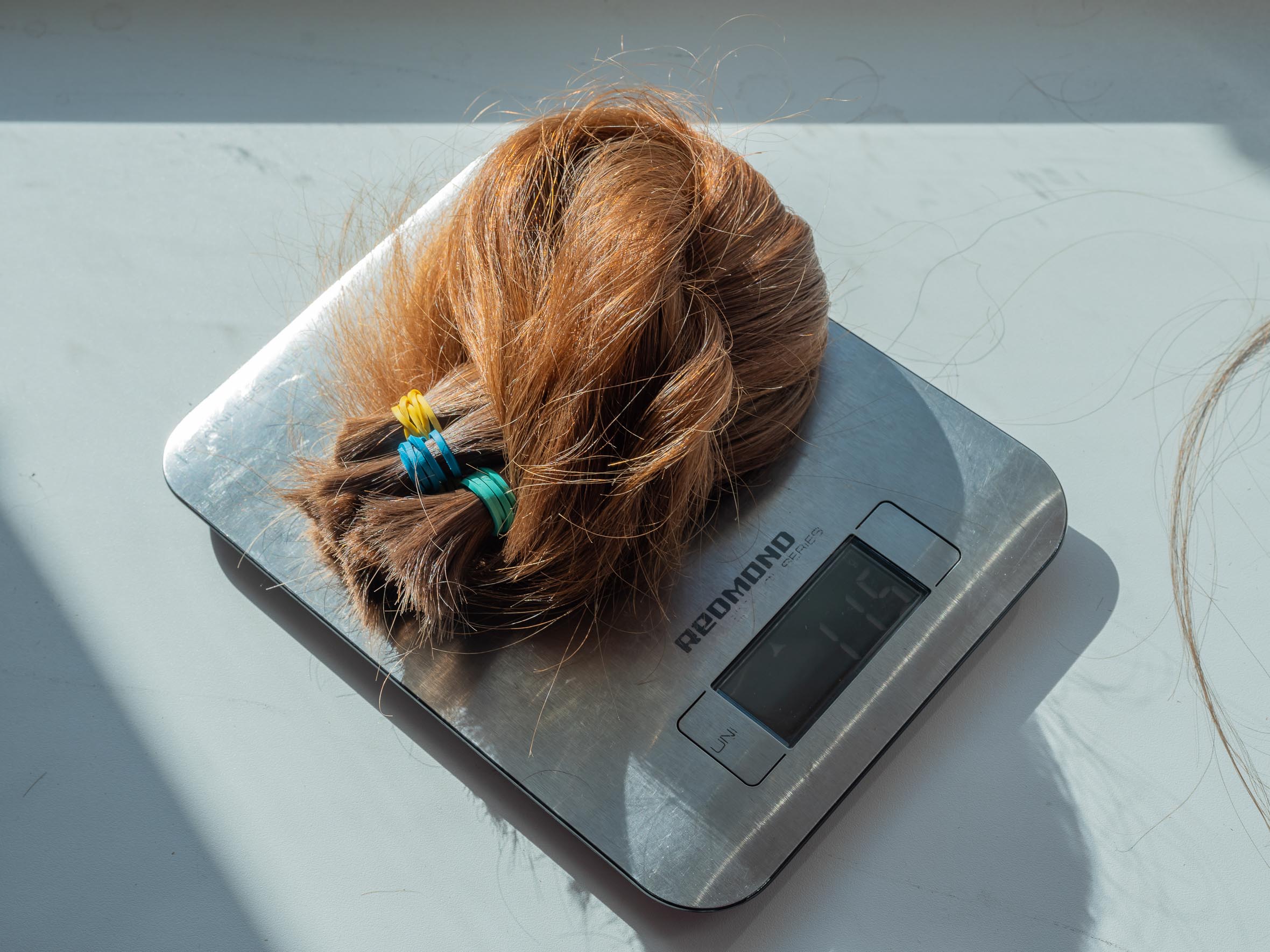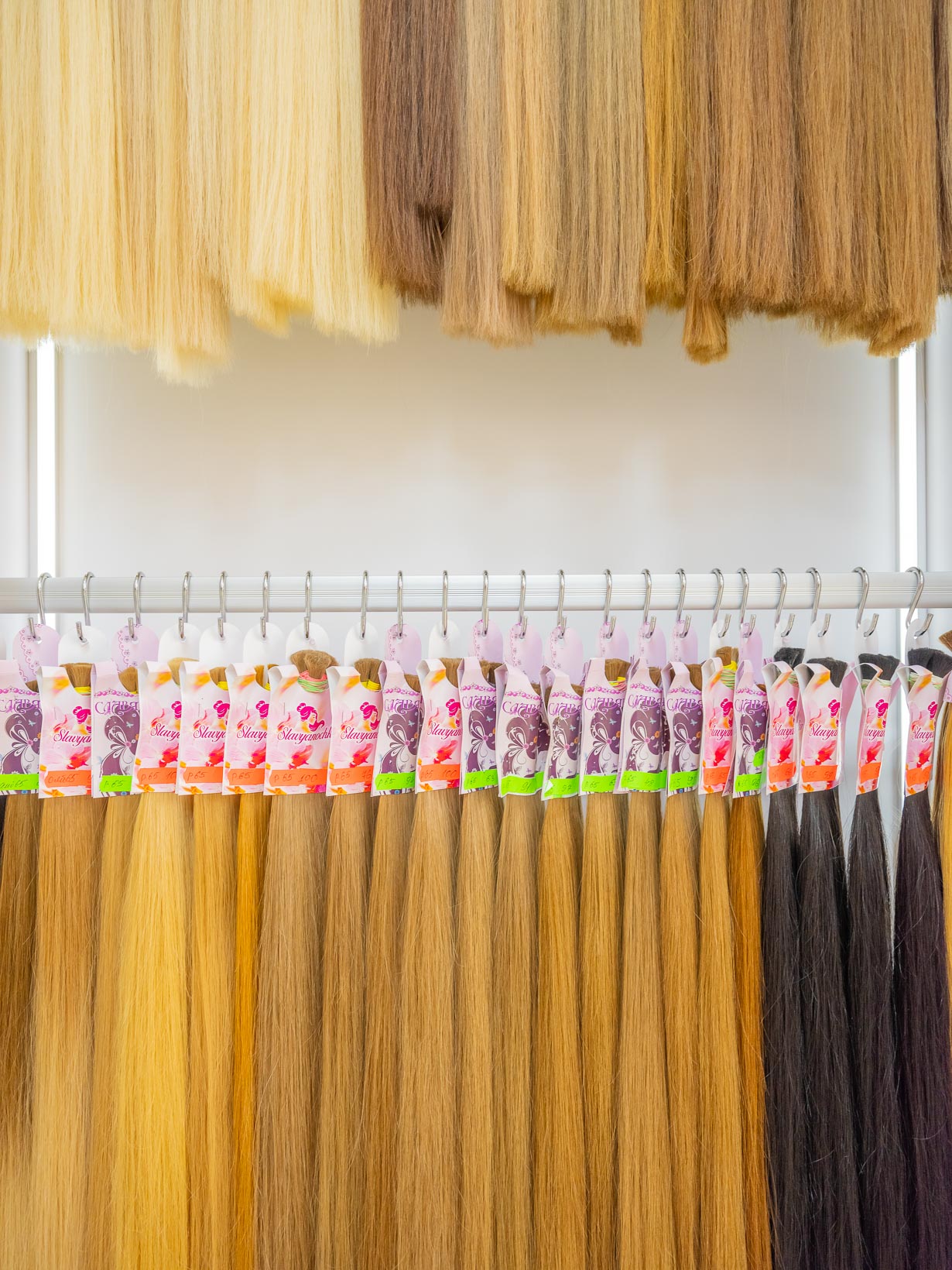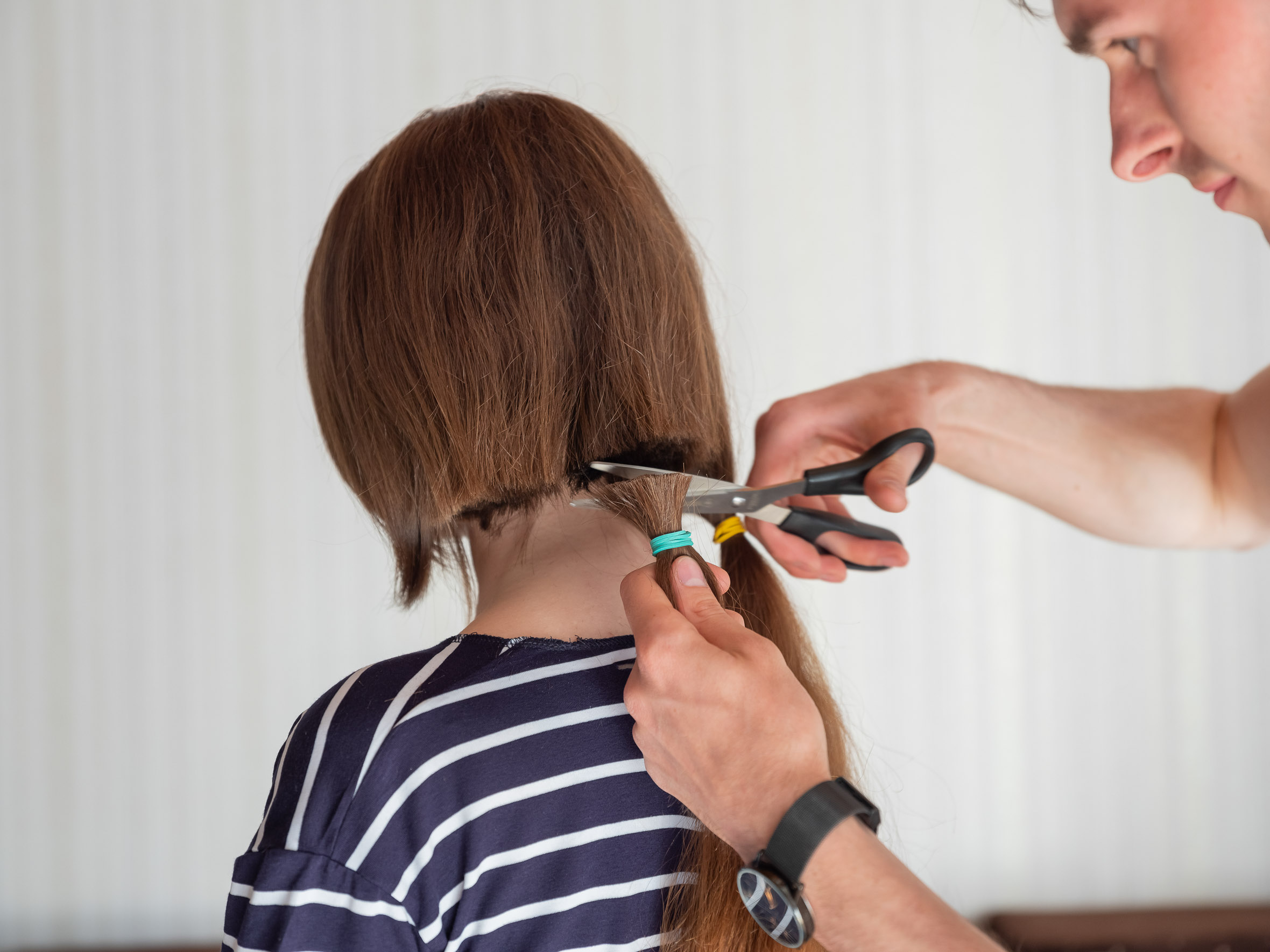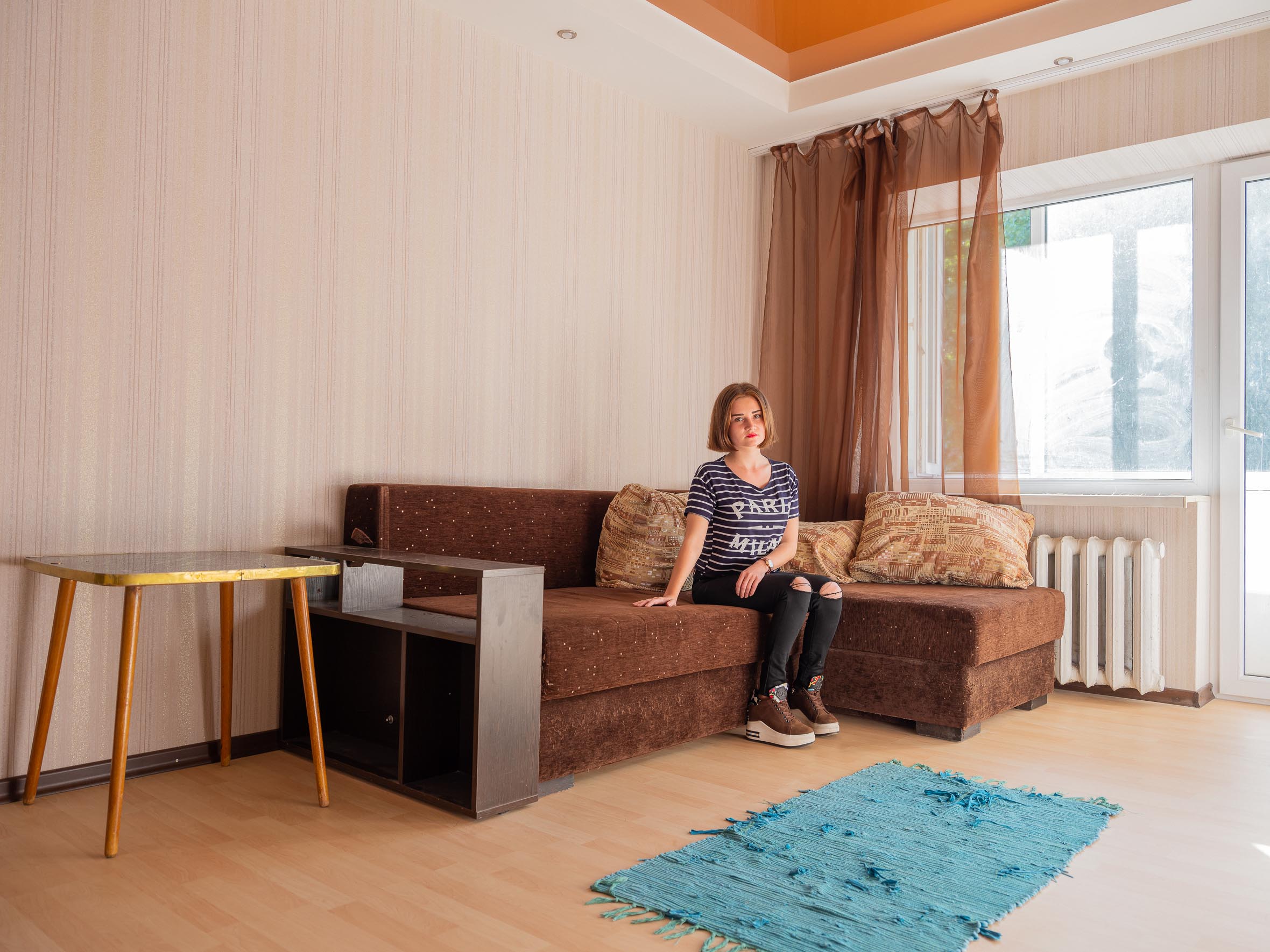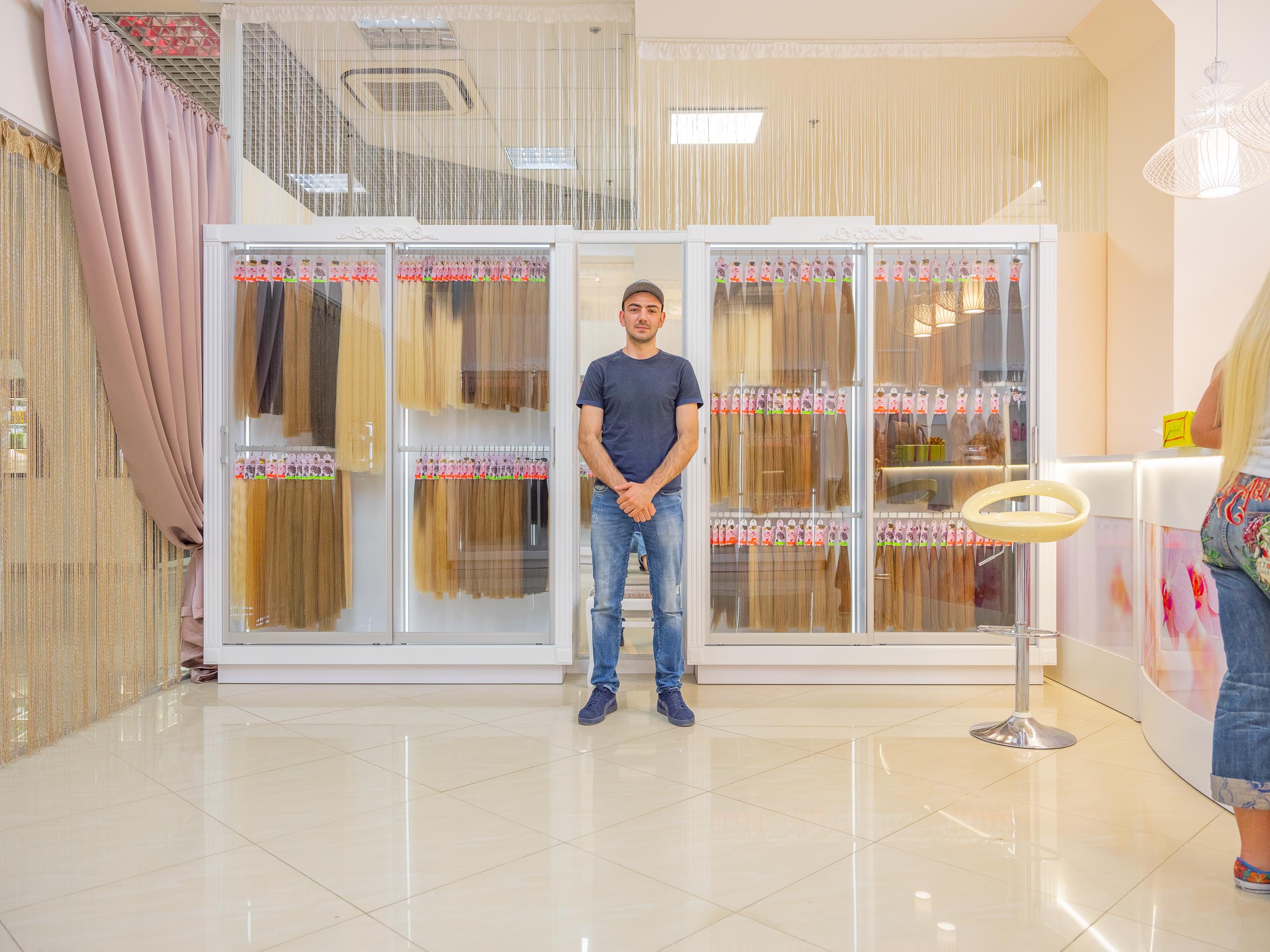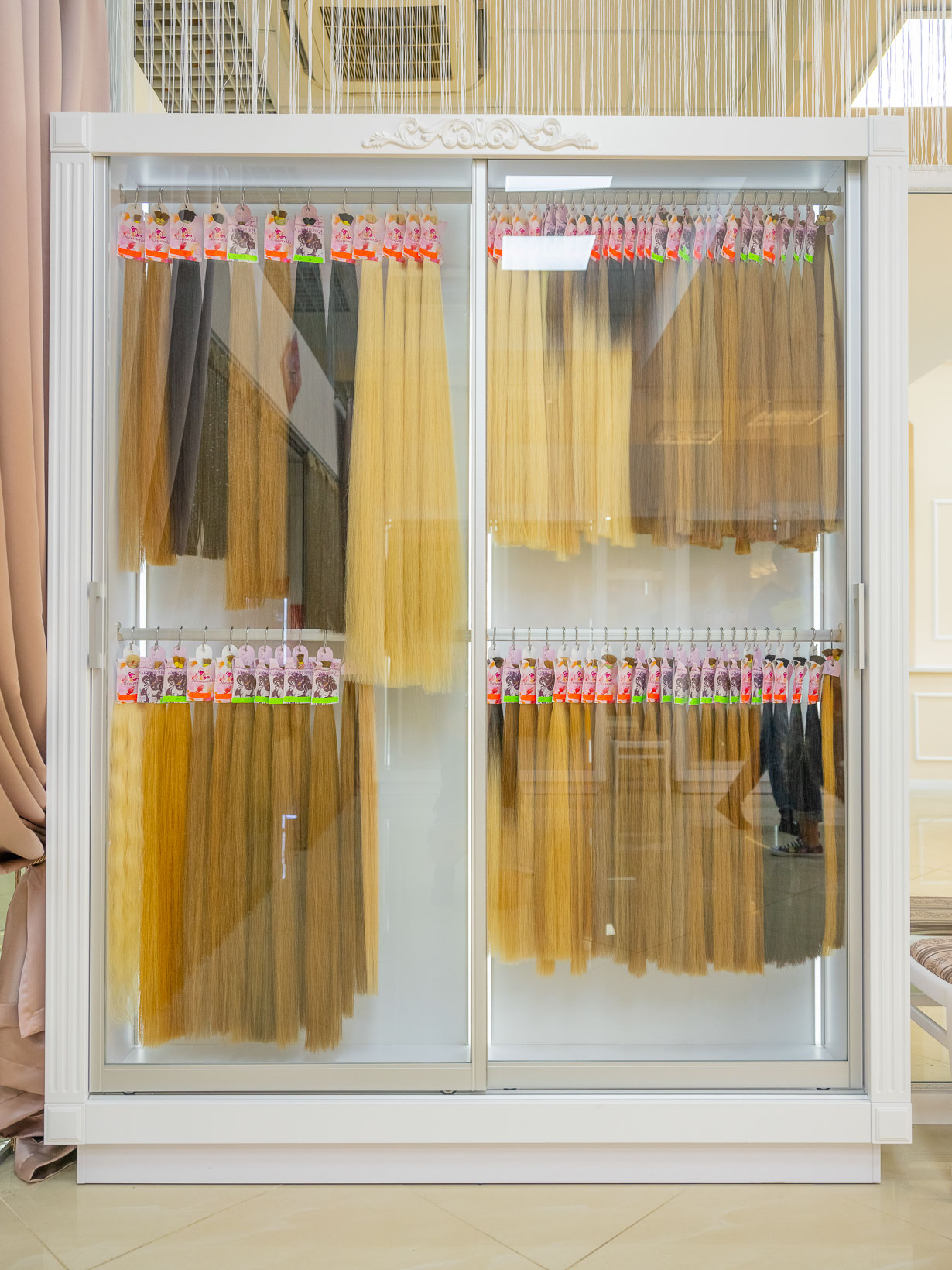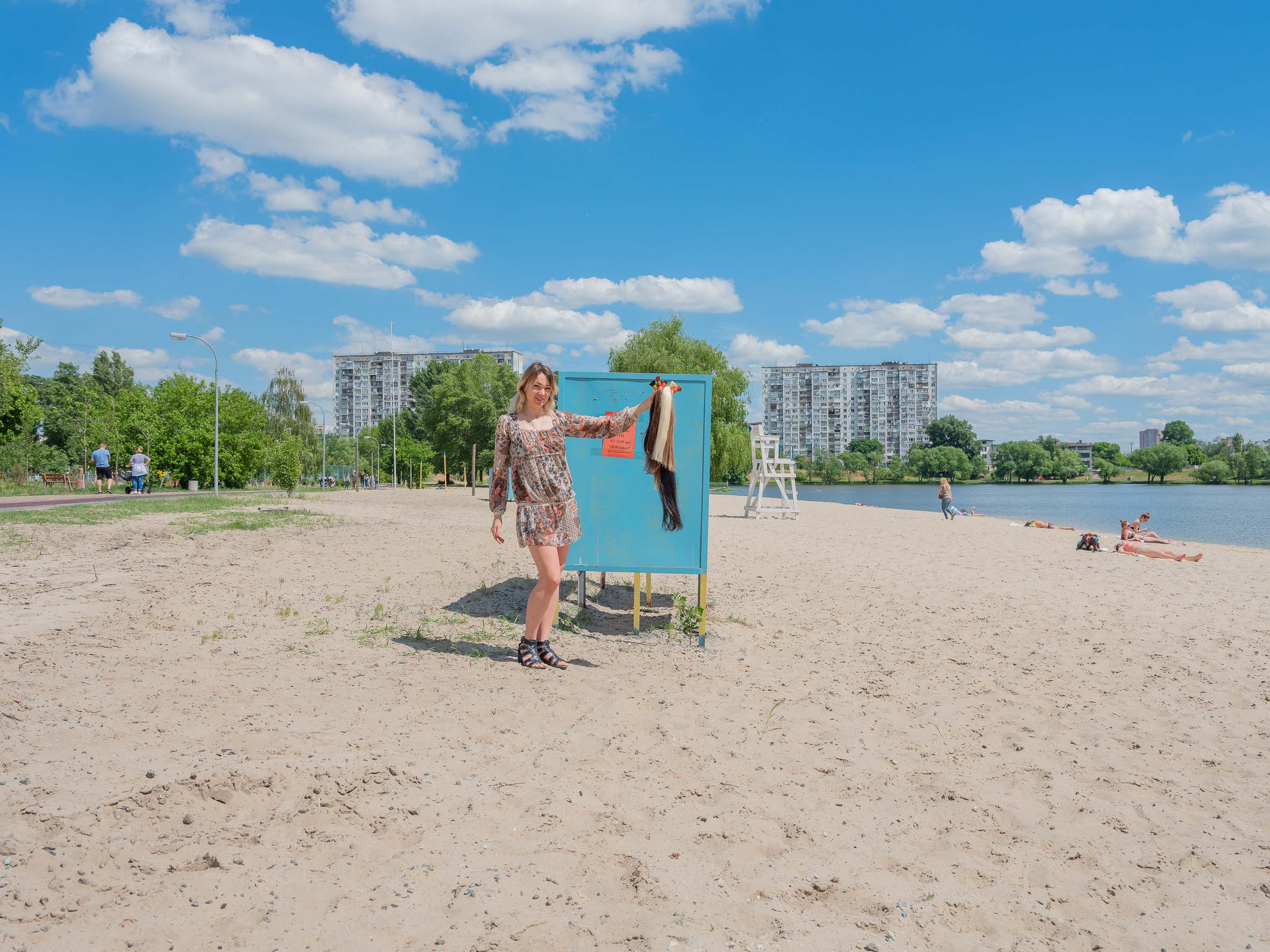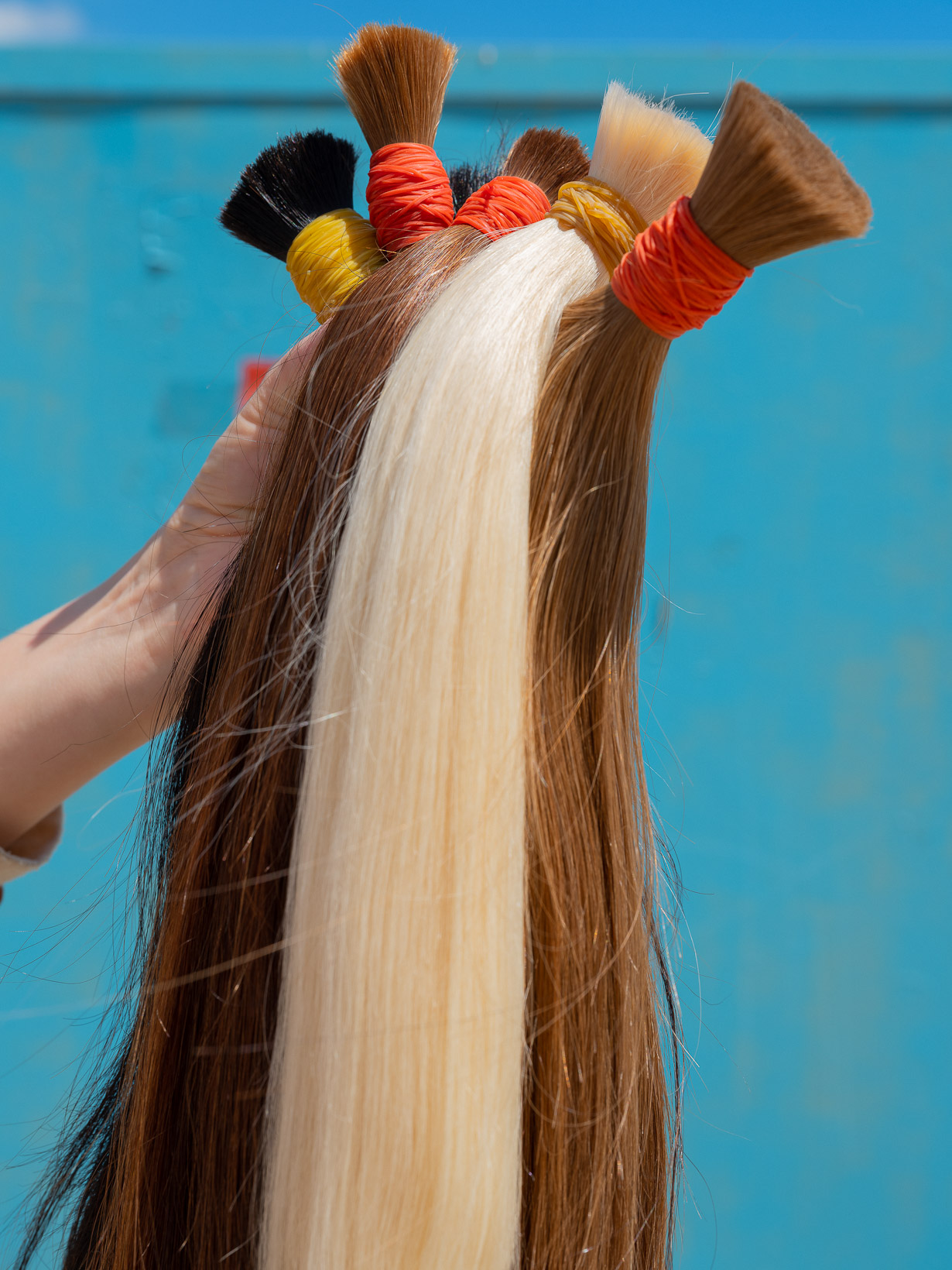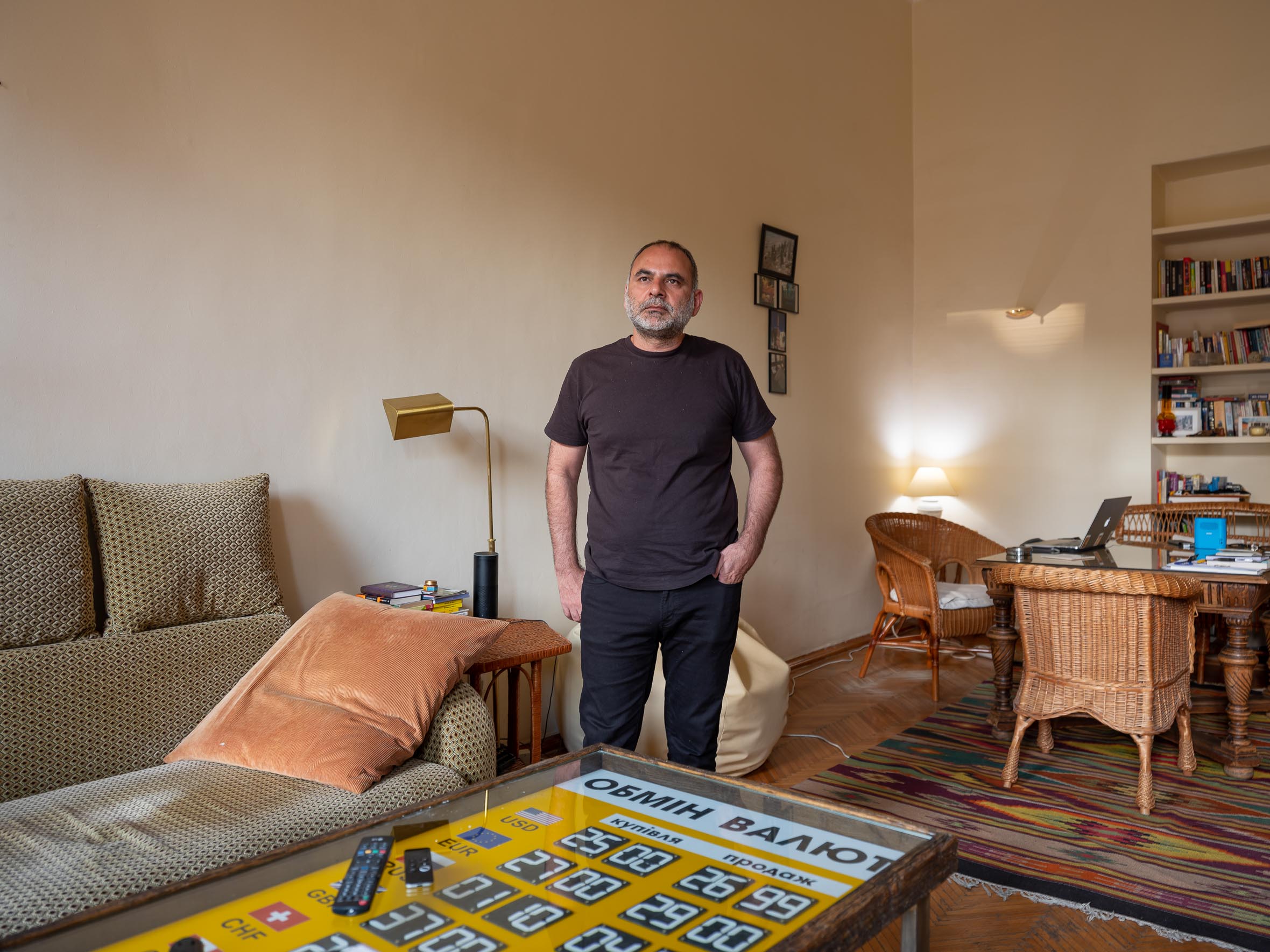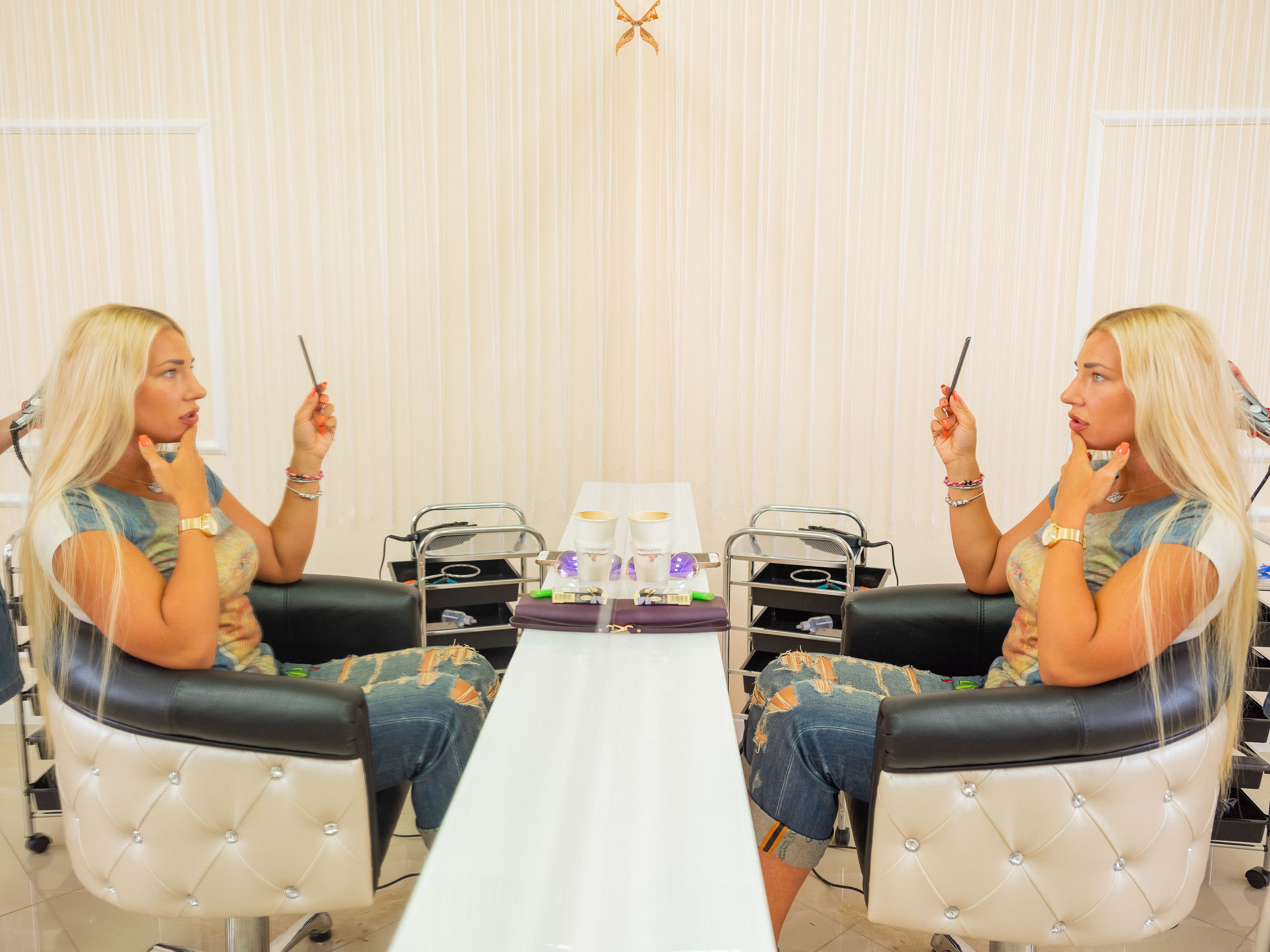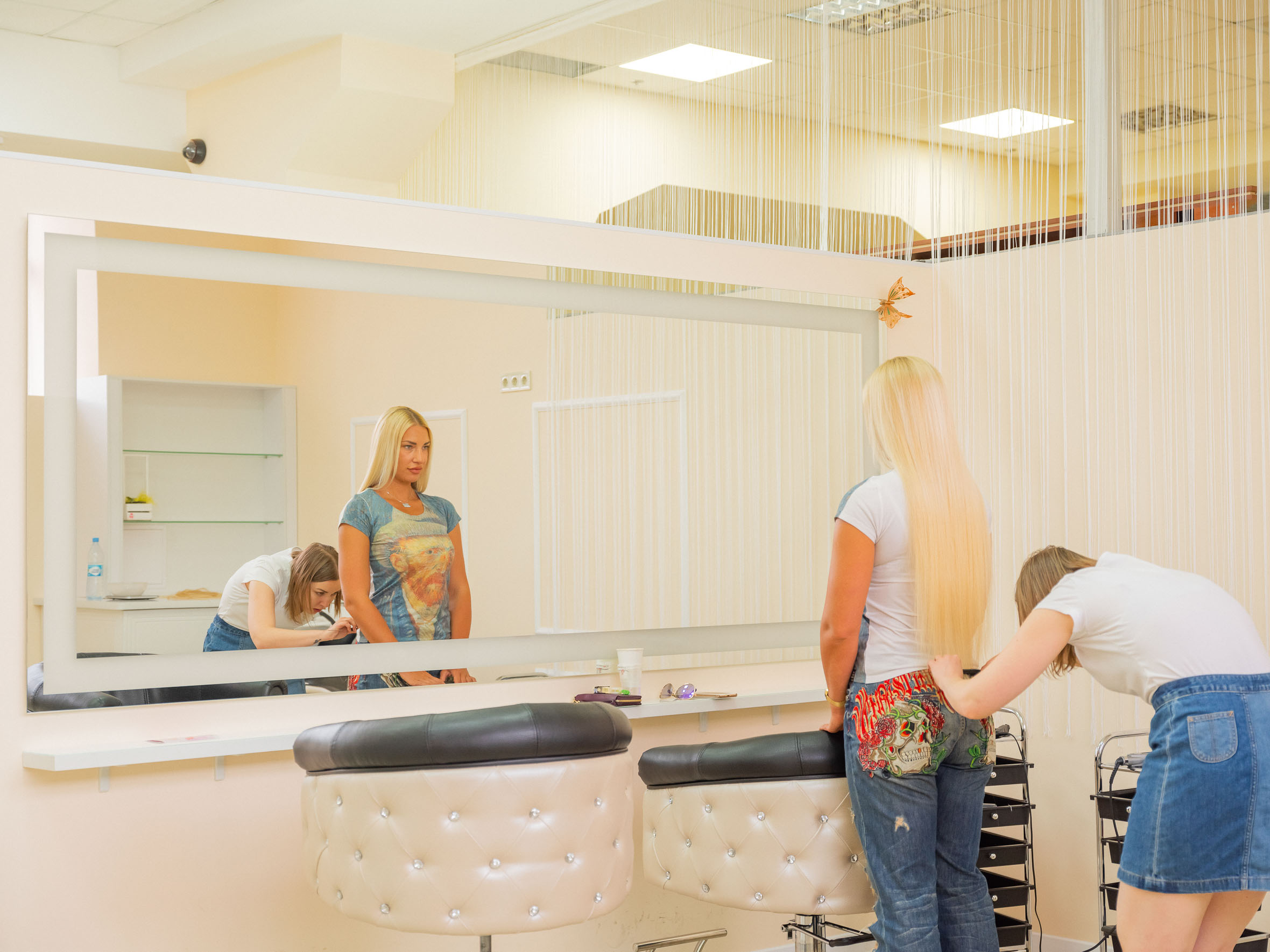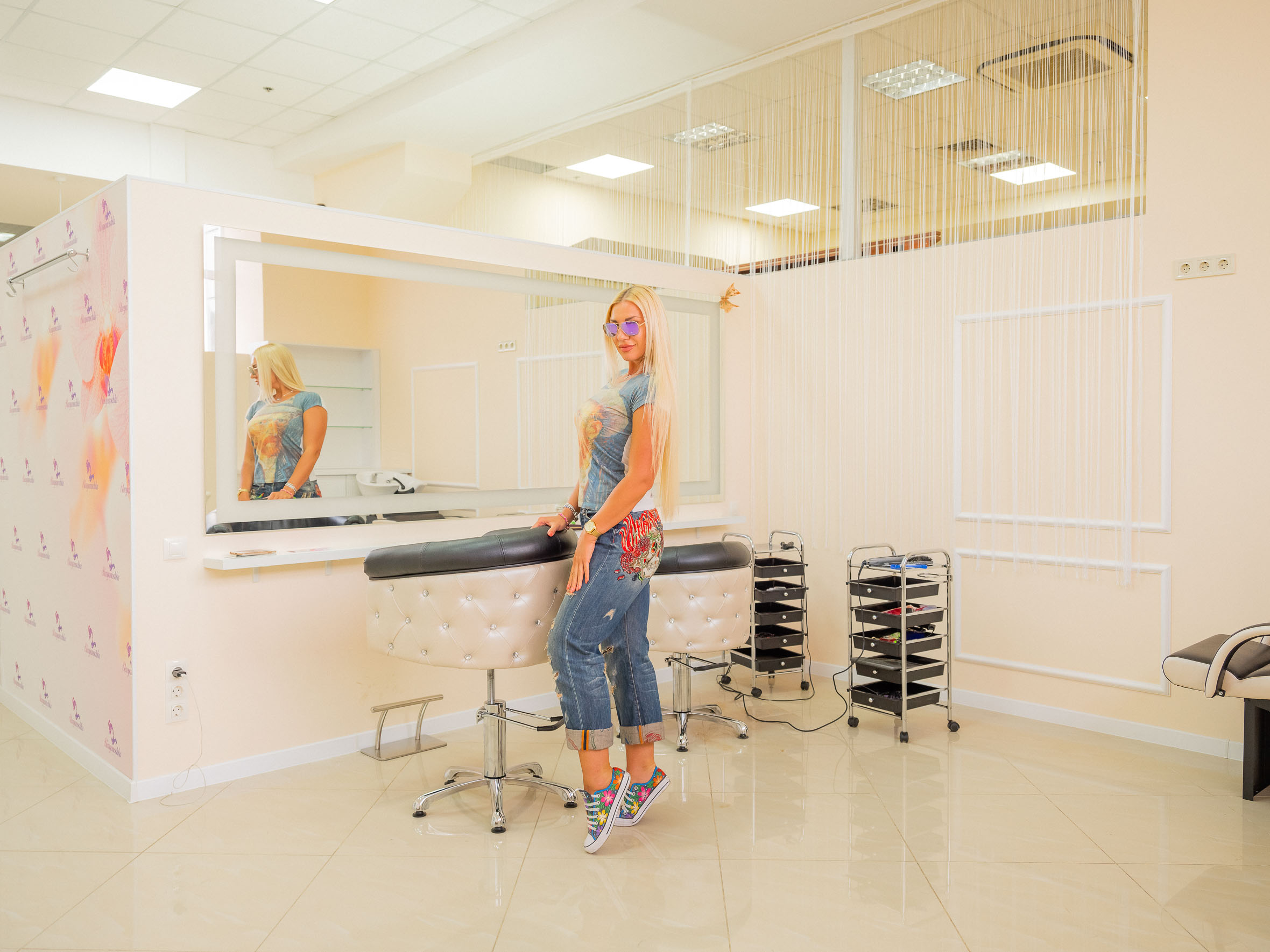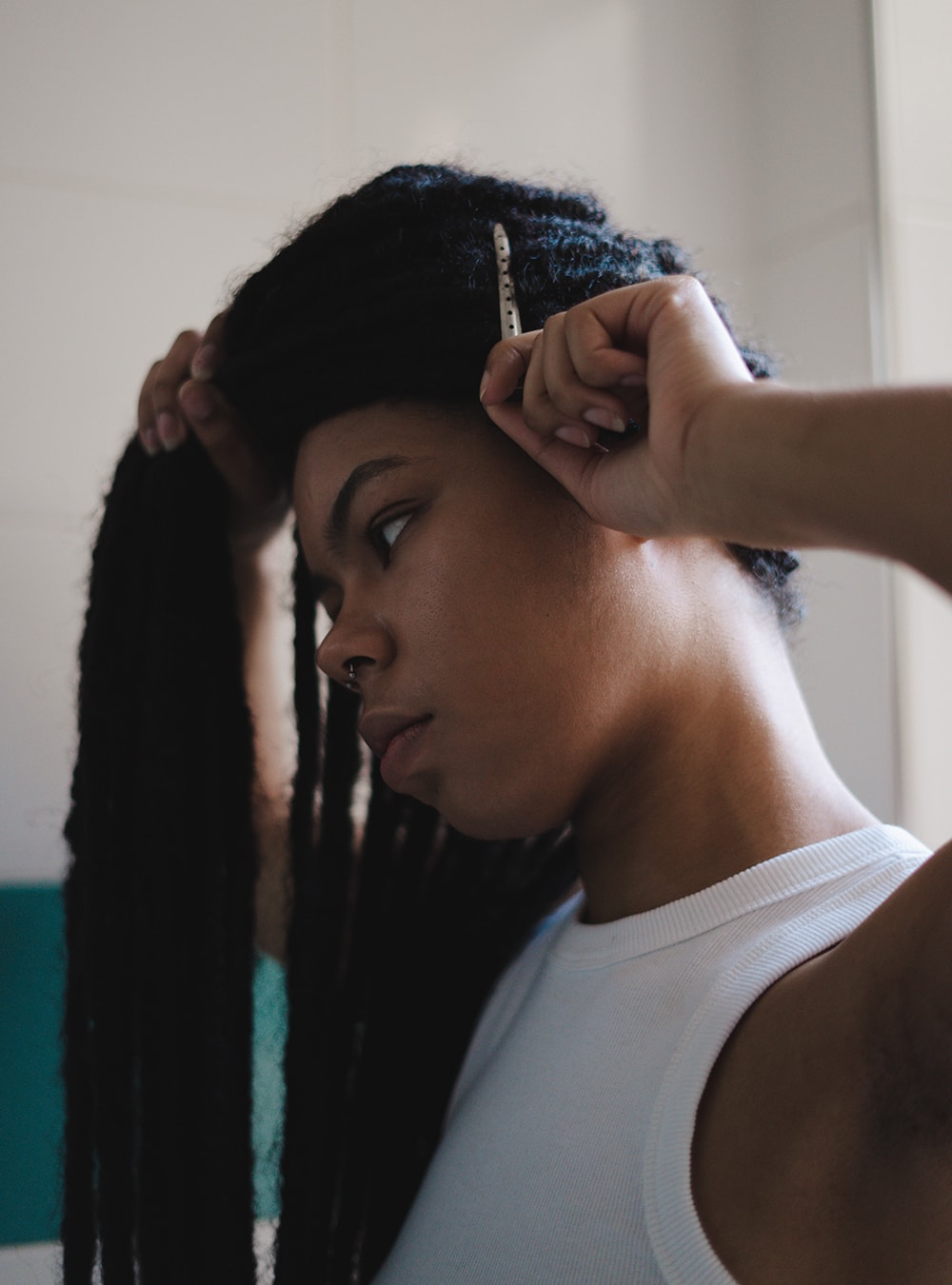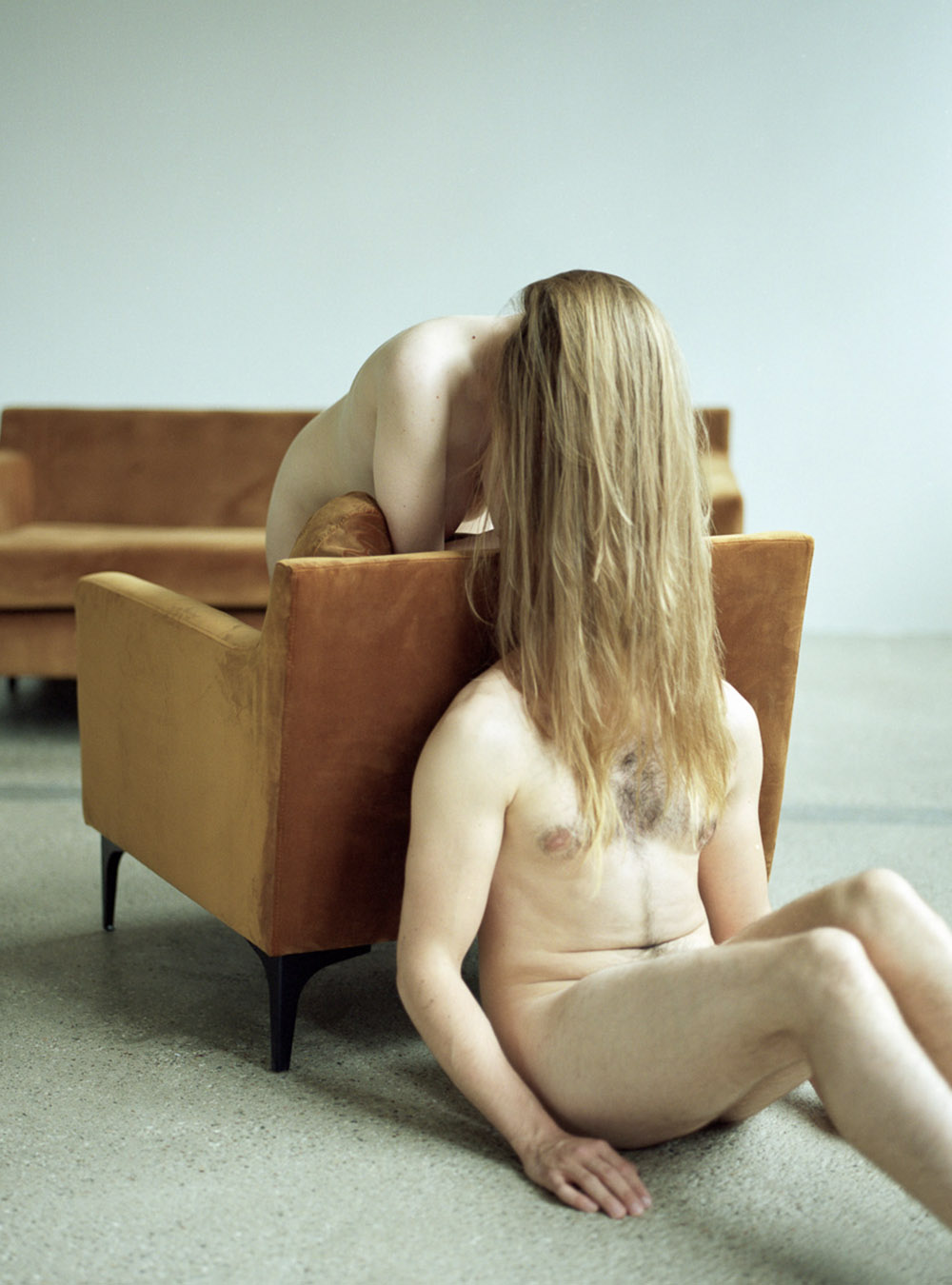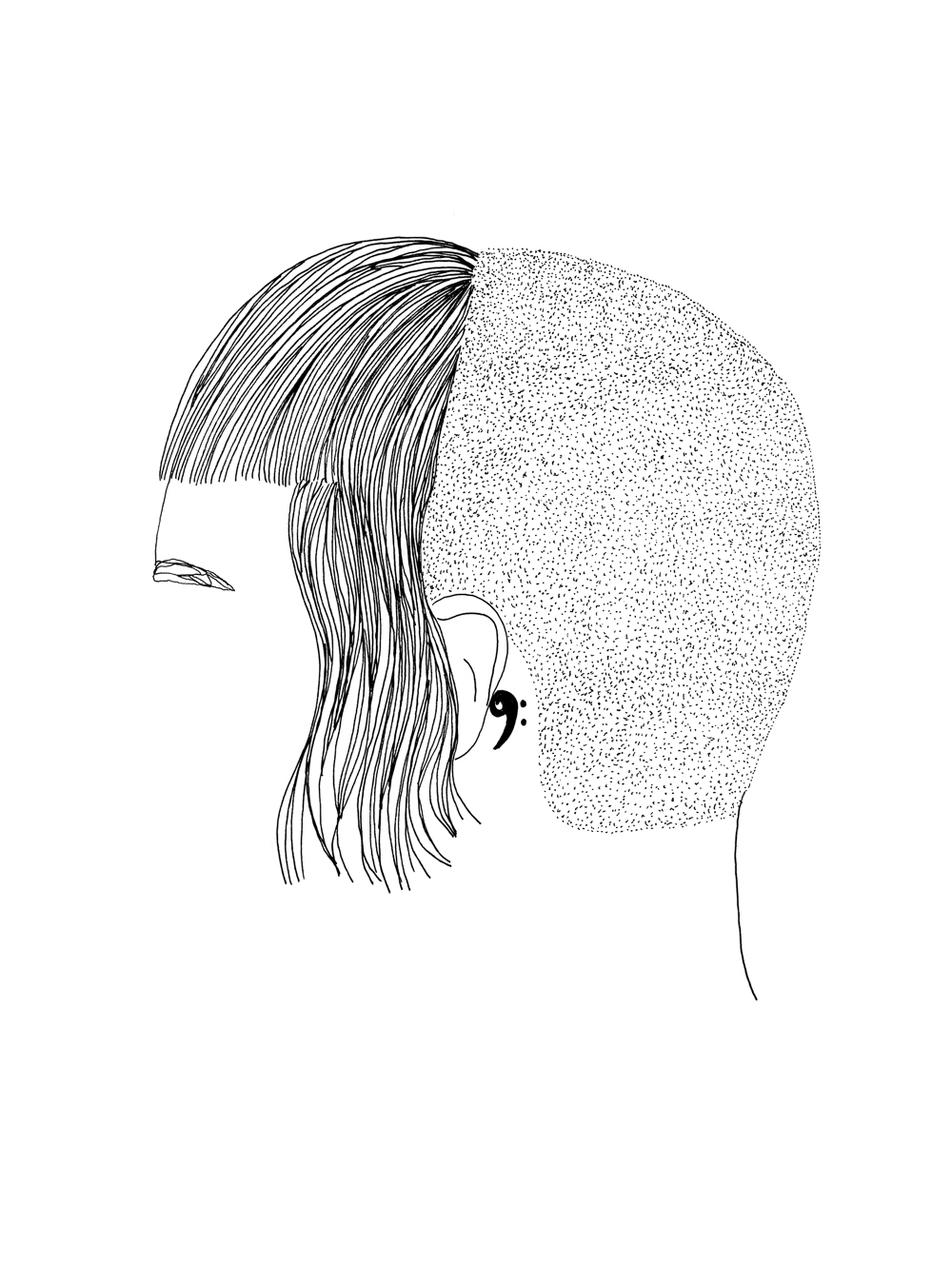- In Search of White Gold
- In Search of White Gold
- In Search of White Gold
ART + CULTURE: Photographer Tom Skipp documents the hidden world of the Ukrainian hair trade
Photography + Interviews: Tom Skipp
Words: Alex Mascolo
The global human hair trade amasses to a billion-dollar industry. Although the roots of the hair trade within both India and China have been thoroughly documented, the Ukraine and Russia, also key industry suppliers, remain largely unexplored. Classified as a developing country, Ukraine’s women on average earn less than $150 per month. With the global demand for natural, chemically-untreated Slavic hair, referred to in the industry as ‘white gold’, at an all-time high, hair traders offer these women easy cash, fast.
It is easy to forget that hair starts life as an intimate and personal part of the body, and one that is thoroughly alive. Its detachment and subsequent sanitisation before being turned into goods, be it wigs or extensions, helps to separate the product from its original, human source. Hair as commerce feels far removed from the personal relationship we have with our own hair, so to re-equate and re-establish that personal connection, photographer Tom Skipp followed the thread of hair from seller’s head to eventual customer, developing a linear account of its journey within the Ukrainian hair trade. By tracking posters offering to pay money for hair and partnering with a fixer, Skipp was able to meet some of the key players in this largely hidden game.
Stage 1: The Seller: I simply wanted to change my image, but my boyfriend said, “why simply cut it off when you can also sell it?” So, I mixed business with pleasure. I applied through websites of salons wanting to buy hair, and started being called and texted at once. First, there was a woman from another Ukrainian city who asked me to send my hair by post for 2000 UAH ($76) per 100 grams, but I refused because it seemed weird and strange. After that, a man called, who offered to cut my hair first and for me to name my price. This was also weird because it’s hairdressers who should know their prices, not me. I had another offer for 1800 UAH ($69) per 100 grams, and also a woman called who offered the highest price of 2300 UAH ($88) but that again fell through. After, this man Yurii called, the one who cut my hair, and asked me to send a photo first so that he could estimate his price. After having my hair cut I now feel scared that I look bad as no money can replace my beauty. I’m anxious about people’s reactions. But as for how I personally feel about cutting my hair… it’s hard to tell. I don’t know yet.
Allina, 22, Student
Stage 2: The Salon Owner: We specialise in building hair up rather than cutting it. Our Slavic girls are willing to pay every last penny to be beautiful and have long hair. Women do come to sell their hair, but not that often. As a rule, the demand on building up is more than on cutting, which is where the high prices come from. Sometimes mums take their daughters to cut their hair, and it’s killing two birds with one stone. You can both earn money, plus it’s difficult to look after children’s hair. We cut the hair, hygienically treat it and then it is ready to make hairpieces and wigs with. A lot of items can be crafted from them. The girls… what do they feel? The longer the hair, the prettier it looks and the more beautiful the girl. But the ones that cut their hair, they mostly feel free – it’s easier to comb and look after anyway. In general, we offer from $60 to $300 per 100 grams. On average, extensions require 100 to 120 grams but it also depends on length. 50cm is enough to make up 100 grams but it depends on the thickness of the seller’s hair. Now hair building is becoming really popular. Every second person wants it. I had a customer who had her own thick long hair, she came in and asked me to cut it off because she was tired of it. She sold it afterwards, but came back a week later saying, “I want my hair back”.
Yevgeny, 28
Stage 3: The Buyer: I cut Slavic women’s hair and use it to make extensions for women that have short hair. I collect it from one woman and take it to another. I’ve been doing this for 11 years. In Ukraine and Russia, women want to be beautiful and hair is an important part of that. Slavic hair is the best in the world and very popular in other countries. I sell it to people throughout Europe and the USA, over the internet and using Instagram. I create adverts asking for women that have long hair, they call me, we meet and I cut their hair. Every week is different but on average about four women per week want to sell their hair. It takes a long time for women with long hair to care for it, so cutting it is better.
Tatiana, 34
Stage 4: The Exporter: I set up a company eight years ago selling Ukrainian and Russian hair to clients that create hair extensions and wigs, mostly in America. I buy the hair locally and then sell it, so it’s like a trading business. I haven’t really had any contact with the women themselves. I haven’t got too involved in the process. My main goal is to find as many clients as possible to sell it to. Finding people that want it all the time and are willing to pay a decent price is far more interesting to me.
It’s a fairly legal business. People get paid for it, it’s girls who want to sell their hair. I mean, maybe they’re not being paid as much as they should be, but in general no one is getting harassed. People assume that because it’s the Ukraine, girls are just being coerced into selling their hair but it is a very civilised place. It’s not like they’re shaving their heads. It’s all about context and in the Ukraine, wages are very low, even less than India and China. It’s an anomaly. Some people work for like $200 a month, so, if you sell your hair and you make $100 or even $50, that’s huge.
If someone says, “I want two or three kilos of this,” then they usually specify what they want and that dictates who I make the calls to and buy the hair from. Then I ship it out to them through FedEx. It’s all just on PayPal and it’s all very normal. Usually when I go to the States that’s when it’s a bit more active. I have clients in New York who have worked with me for a couple of years, they know me and wait for me. The hair I sell goes to make wigs and hair extensions for cancer patients, alopecia and hair loss sufferers. The hair I sell is expensive so it goes to wealthy women who need wigs. There are professional wig makers in New York that have been creating wigs for 20 or 30 years that charge between $4,000 and $6,000 a wig.
Vijai, 48
Stage 4: The Customer
- ANTHROPOLOGY OF HAIR
- ANTHROPOLOGY OF HAIR
- ANTHROPOLOGY OF HAIR
- ANTHROPOLOGY OF HAIR
- ANTHROPOLOGY OF HAIR
